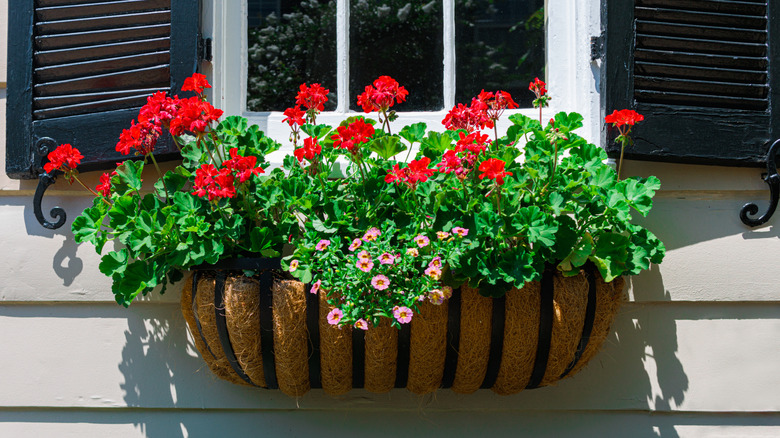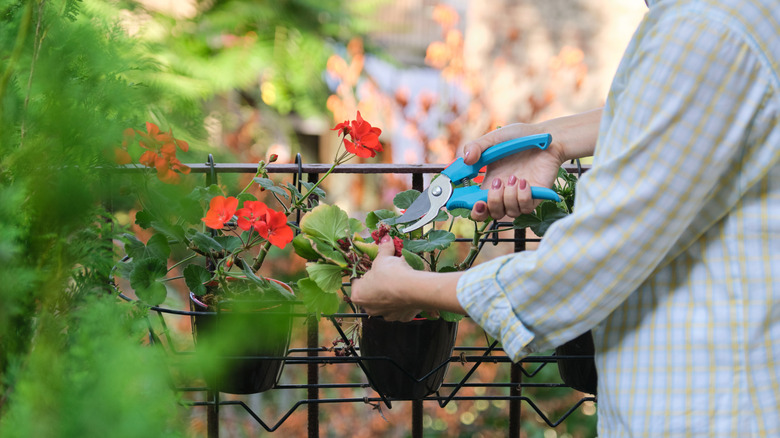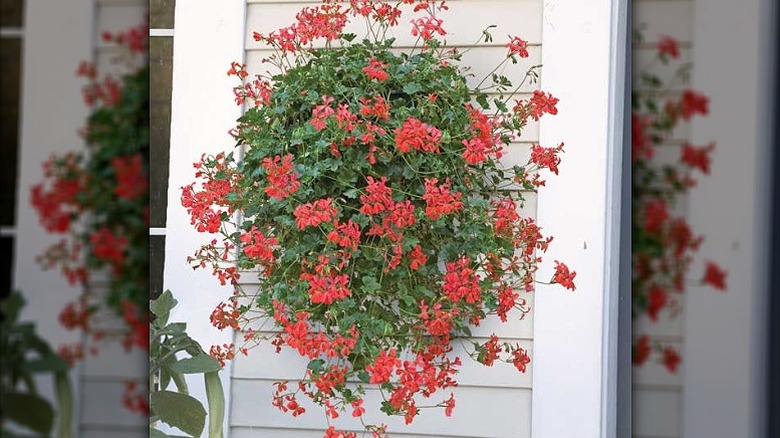Signs That Indicate It's Time To Deadhead Your Geraniums
For most gardeners, geraniums are one of the easiest plants to grow if you know how to take care of them. There are so many different varieties available that will allow you to completely fill your garden or containers with riotous color all through their growing season. You can even grow geraniums from seed for a garden bed full of blooms. If you've only just started growing these beauties and you want to maximize their blooming potential, you'll want to know how and when to deadhead your geraniums. But, as you peruse your plant and all its colorful blooms, are there any signs you can look out for that might indicate that it's time to trim back these flowers?
If you familiarize yourself with all those bountiful blooms and can appreciate their stunning beauty when they're at their prime, you'll quickly be able to see the subtle changes that indicate your flowers are on the way out. Common signs you want to look out for include faded or dropped petals, browning edges, and drooping flower heads.
Check your geraniums regularly to look for these signs
If you inspect your plants often, or at least on a weekly basis, you'll soon be able to identify the blooms that need to be removed. One of the most obvious signs is that the brightly colored petals are starting to lose their vibrancy and are looking a little faded. When you take a closer look at those blooms, you might even see that some of the petals have dropped. Another sign to let you know that your geranium flowers need deadheading is that, upon closer inspection, you notice that the petals are starting to dry and may actually have some brown edges.
A pretty obvious sign that your flowers are past their prime is when they start to droop, wilt, or begin to shrivel. These can easily be snapped off or cut with a pair of pruning shears. At the same time, you'll also want to remove any damaged or yellowing leaves so that your plant looks nice and healthy. If you've had a fair bit of rain, you might notice that some of the petals are looking brown and mushy, in which case it's best to just remove these flowers so they're not a haven for a fungal infestation. This way, the plant can concentrate on growing more happy and healthy geraniums to fill your garden with joy.
Geranium varieties that don't require deadheading
If you're looking to add some more low-maintenance geranium varieties to your collection, there are some cultivars that are self-cleaning and don't have to be deadheaded. 'Balcon' geraniums are part of the ivy-leaf types that are trailing and popular for hanging baskets. These have smaller flowers in a variety of colors, including red and pink. You'll love the profusion of blooms on their trailing stems that make quite a spectacular display. Other ivy-leaf varieties to look out for include the 'Blizzard' and 'Cascade' cultivars.
'Starman' (Geranium soboliferum 'Starman') is another hybrid that doesn't need to be deadheaded. This is a mounding form that flowers prolifically starting in late summer. The blooms are a stunning two-toned purple and are around 1 to 2 inches in diameter. The plant only grows to a height of around 16 inches but will spread to a width of 36 inches. It's also interesting to note that seed geraniums have an unusual self-cleaning habit, known as petal shattering. These varieties will drop their petals during a rain shower or when the wind hits them. They're generally grown as annuals and have single flowers.


